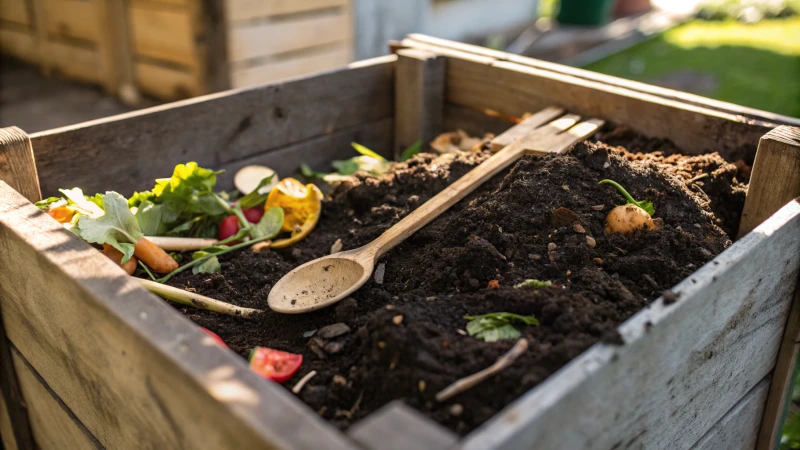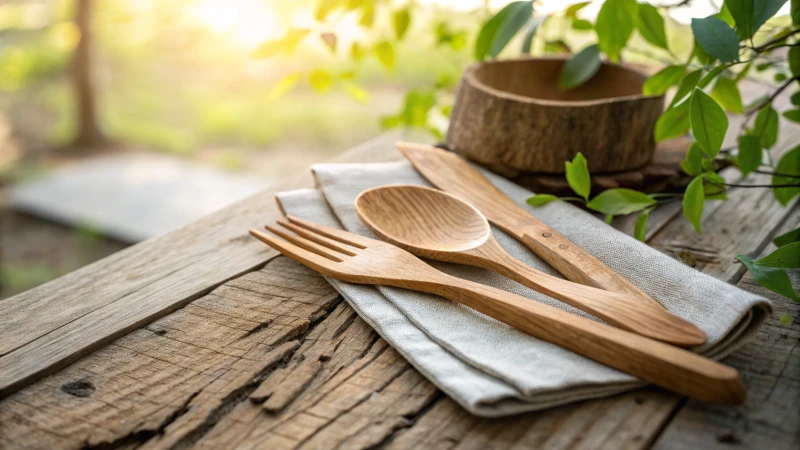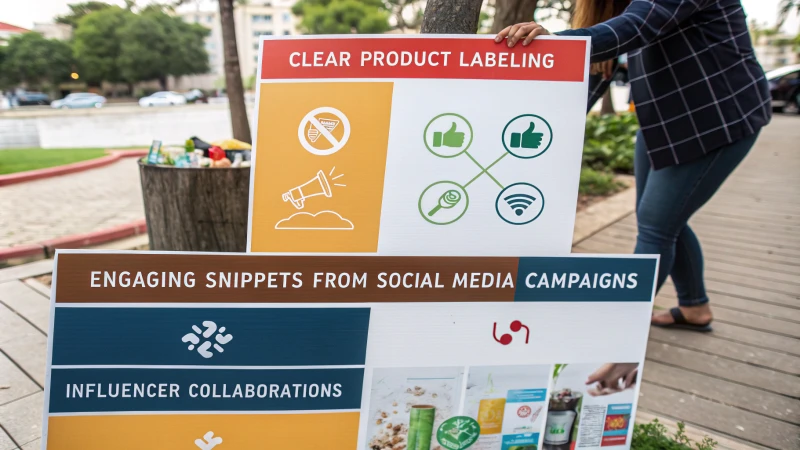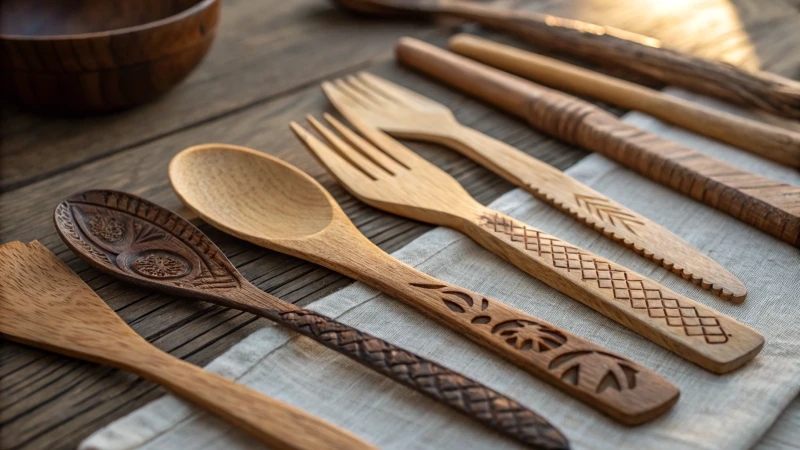
Ever found yourself wondering how to make a real difference with those wooden forks and knives? It's easier than you think!
To properly dispose of wooden cutlery, I can compost it at home or use local municipal composting services. Checking local recycling guidelines is essential, as options vary. Choosing cutlery labeled biodegradable or compostable ensures an eco-friendly disposal.
I remember the first time I hosted a backyard barbecue and decided to go green with wooden cutlery. After the event, I stood in my kitchen, surrounded by used forks and knives, pondering what to do next. Composting seemed like a logical step, but understanding how my local waste system operated took some digging. I discovered that while composting is straightforward, the real challenge is educating myself—and others—about the specific local guidelines and certifications that make a difference. Embracing these practices not only helps the planet but also inspires those around me to think sustainably.
Wooden cutlery can be composted in home compost bins.True
Wooden cutlery is biodegradable, making it suitable for home composting.
Recycling wooden cutlery is the same everywhere.False
Recycling guidelines vary by location, so local rules should be checked.
Why is Wooden Cutlery More Eco-Friendly Than Plastic?
Ever wondered if your disposable cutlery could help save the planet?
Wooden cutlery is eco-friendly because it’s biodegradable, made from renewable materials, and often compostable. Unlike plastic, it doesn’t contribute to long-term pollution or depend on fossil fuels for production.

The Material Lifecycle: From Source to Decomposition
I remember when I first realized the impact of our everyday choices on the environment. It was during a camping trip where I noticed how natural and fitting it felt to use wooden utensils, right there in nature. Wooden cutlery starts its journey from renewable resources like birch or bamboo. These are harvested sustainably, ensuring forests remain lush and vibrant. Plastic cutlery1, on the other hand, is made from petroleum—a resource that’s not only finite but involves extraction processes that can scar the earth.
Biodegradability and Compostability
The beauty of wooden cutlery is that when it’s time to part ways, it returns to the earth without a fuss. I’ve personally tried composting them at home, and it’s oddly satisfying to see them break down and enrich the soil. In contrast, plastic utensils hang around for centuries, often ending up in places they shouldn’t—like our oceans.
| Feature | Wooden Cutlery | Plastic Cutlery |
|---|---|---|
| Source Material | Renewable (wood) | Non-renewable (petroleum) |
| Decomposition Time | Months to a few years | Hundreds of years |
| Environmental Impact | Low (biodegradable) | High (persistent waste) |
Carbon Footprint Considerations
Producing wooden cutlery doesn’t just take less energy; it’s also a carbon warrior during its growth phase by absorbing CO2. This was an eye-opener for me, realizing that my choice could actively help combat climate change. Plastic manufacturing, however, is a greenhouse gas heavy-hitter.
Consumer Education and Impact
Understanding the benefits of wooden cutlery can transform habits. I’ve seen firsthand how effective labeling and social media can nudge people towards greener choices. By knowing how to compost properly, consumers can significantly reduce their environmental footprint through proper composting practices2.
Design and Aesthetic Appeal
There’s something undeniably charming about wooden cutlery—it has this rustic elegance that I love. It fits perfectly with any eco-conscious brand or event. Plus, it can be customized to enhance both style and sustainability, making it not just a choice for the planet but for aesthetic pleasure too—ideal for eco-friendly restaurants3.
Wooden cutlery is made from renewable resources.True
Wooden cutlery uses materials like birch or bamboo, which are renewable.
Plastic cutlery decomposes faster than wooden cutlery.False
Plastic takes hundreds of years to decompose, unlike wooden cutlery.
Can Wooden Cutlery Be Recycled or Must It Be Composted?
Ever wondered what to do with wooden cutlery after your picnic? Let's dive into the sustainable choices for their disposal—composting or recycling.
Wooden cutlery is typically compostable at home or in industrial facilities due to its natural decomposition. Recycling isn't common because food residue can contaminate the recycling stream.

Understanding Composting for Wooden Cutlery
I remember the first time I threw a dinner party using eco-friendly wooden cutlery. I was thrilled to be taking a step towards sustainability, but when it came time to clean up, I found myself pondering, "What now?" If you’ve ever been in my shoes, you'll appreciate how composting offers an answer. Wood, being naturally biodegradable, makes wooden cutlery perfect for composting, whether you have a bin at home or access to an industrial facility.
| Factors | Home Composting | Industrial Composting |
|---|---|---|
| Decomposition Time | Slower, varies by conditions | Faster due to optimized setup |
| Suitability | Small quantities | Large scale, efficient |
| Contaminants Handling | Requires vigilance | Professional handling |
Home composting can be a bit of a slow process, but there’s something deeply satisfying about knowing you’re returning nutrients to the earth. However, if you're looking for efficiency, industrial composting is the way to go—it breaks down materials faster and more effectively.
But beware! To ensure successful composting, avoid cutlery with coatings or additives that could slow down decomposition.
Recycling Challenges
Recycling wooden cutlery isn't quite as straightforward. Imagine trying to recycle wood that’s been smeared with last night’s pesto sauce—it's not exactly easy. This contamination is why many recycling facilities hesitate to accept used wooden cutlery. In theory, if your wooden utensils were pristine and made from untreated wood, recycling could be possible. But let’s be honest; after a hearty meal, spotless cutlery is rare!
To know for sure if your area can recycle such items, always check local recycling guidelines4.
Environmental Impact Considerations
When choosing between composting and recycling, it's crucial to weigh their environmental impacts.
| Method | Advantages | Disadvantages |
|---|---|---|
| Composting | Natural decomposition, soil enrichment | Requires facilities or setup |
| Recycling | Potential resource recovery | Contamination issues, limited acceptance |
Composting enriches the soil naturally and curtails landfill waste and greenhouse emissions—a win for Mother Earth! While less common for wooden cutlery, effective recycling could reduce reliance on virgin materials.
Ultimately, both methods contribute to sustainability goals. By understanding these options and what’s available locally, we can all make informed decisions that support our eco-friendly initiatives5 and help protect our planet.
Understanding the availability of composting facilities and regional regulations can greatly influence the best disposal choice for your wooden cutlery.
Wooden cutlery can be composted at home.True
Wooden cutlery is biodegradable, making it suitable for home composting.
Recycling wooden cutlery is widely accepted.False
Contamination from food residues makes recycling wooden cutlery uncommon.
What are the best ways to teach consumers about sustainable disposal?
Navigating the world of sustainable disposal can feel daunting, but it's easier than you think. Let's dive into practical ways we can all play a part in creating a greener future.
Educating consumers on sustainable disposal is effective through clear labeling, engaging social media campaigns, and collaborations with influencers. These strategies raise awareness and encourage actionable changes in consumer behavior.

Utilizing Clear Labeling Systems
I remember the first time I flipped over a package and saw a recycling symbol with detailed instructions. It was like a little guidebook that told me exactly how to do my part for the planet. Clear labeling systems are a fantastic way to steer consumers towards responsible disposal methods. By adding recycling instructions or eco-symbols on packaging, brands can enhance consumer understanding6 of proper product disposal. Incorporating QR codes that link to instructional videos or guides can further support this effort, making it easy for anyone to follow along.
Harnessing the Power of Social Media
Social media has become my go-to for quick tips and hacks on just about everything—including sustainable practices. Platforms like Instagram and TikTok are dynamic spaces perfect for educating consumers. Creating shareable content like infographics or short videos on disposal practices can spread awareness quickly. Partnering with eco-conscious influencers can amplify these messages, reaching diverse audiences more effectively than traditional advertising ever could.
Collaborating with Community Initiatives
Once, I joined a community clean-up event organized by a local environmental group. Not only did I learn a lot, but I also met people who shared my passion for sustainability. Partnering with local environmental groups to offer educational workshops or community clean-up events not only informs but engages consumers actively. These events can be an opportunity to distribute educational materials and provide hands-on demonstrations.
| Strategy | Benefit | Example |
|---|---|---|
| Clear Labeling | Increases awareness at the point of purchase | Use of recycling symbols on packaging |
| Social Media | Broadens reach and engagement | Campaigns with eco-influencers |
| Community Collaboration | Provides practical education | Local workshops and events |
Integrating Technology in Education
Technology has changed how we live, hasn't it? Using apps or online platforms that provide information on local recycling facilities or offer reminders for waste sorting can be highly effective. These tools can notify users about proper disposal practices7 in their area and suggest alternatives to single-use items.
Real-Life Success Stories
I’ve always found inspiration in stories of businesses that have successfully implemented consumer education initiatives. Highlighting these can serve as powerful case studies for others. Companies that have seen a measurable impact from improved labeling or community engagement can inspire others to adopt similar strategies.
Engaging consumers through these various methods not only helps reduce waste but also fosters a culture of sustainability, where informed decision-making becomes second nature.
Clear labeling increases consumer awareness.True
Labels with recycling instructions guide consumers on responsible disposal.
Social media is ineffective for sustainable education.False
Social media spreads awareness quickly through shareable content and influencers.
How Does the Lifecycle of Wooden Cutlery Impact Its Environmental Benefits?
Ever wondered how something as simple as wooden cutlery can make a big difference for our planet?
Wooden cutlery's lifecycle enhances its environmental benefits through sustainable sourcing, energy-efficient manufacturing, and compostable disposal. By understanding these elements, we can better assess its eco-friendliness over plastic.

From Forest to Fork: The Journey Begins
When I think about the journey of wooden cutlery, it all starts with the trees. I remember visiting a forest where sustainable logging was practiced—it was like watching a well-choreographed dance between nature and industry. Every tree cut down was replaced by a new sapling, ensuring the forest remained vibrant and alive. This kind of responsible forestry is essential to preserving biodiversity and reducing deforestation, making it a cornerstone of sustainable sourcing8.
Manufacturing and Its Role
I've always been fascinated by how things are made. Visiting a wooden cutlery factory was a revelation. Unlike the sterile, energy-hungry environments of plastic factories, this place felt more like an artisan's workshop. The focus on renewable energy and waste reduction made it clear that even manufacturing can be kind to the earth. Companies like WonBon are leading the way in efficient manufacturing9, making sustainability part of the process.
Biodegradability and Composting
The beauty of wooden cutlery is that it doesn't stick around forever—unlike its plastic counterparts. I remember trying out composting in my backyard for the first time; watching kitchen scraps and wooden utensils transform into rich soil felt like magic. Educating others on composting techniques10 is vital for maximizing these environmental benefits.
End-of-Life Considerations
What happens when you're done with your wooden fork? Instead of ending up in a landfill, it can return to the earth if disposed of correctly. I love the idea of a circular economy where nothing goes to waste. Encouraging practices like recycling and composting11 ensures we're doing our part for minimal waste.
| Lifecycle Stage | Environmental Impact |
|---|---|
| Raw Material Sourcing | Biodiversity, Deforestation |
| Manufacturing | Energy Use, Emissions |
| Usage | Durability, Safety |
| Disposal | Compostability, Waste Reduction |
By understanding each stage—from how the wood is harvested to how we compost it—we can see how wooden cutlery supports a sustainable future12. It’s not just about replacing plastic; it’s about making choices that align with our values.
Wooden cutlery manufacturing uses less energy than plastic.True
Wooden cutlery production is generally less energy-intensive, enhancing eco-friendliness.
Wooden cutlery cannot be composted effectively.False
Proper composting methods allow wooden cutlery to biodegrade, returning nutrients to the soil.
Conclusion
Consumers can sustainably dispose of wooden cutlery by composting it at home or through municipal services, while understanding local recycling guidelines is crucial for effective waste management.
-
Understand the negative environmental impacts of plastic cutlery, including pollution and non-biodegradability. ↩
-
Learn effective composting methods for wooden cutlery to minimize waste. ↩
-
Explore sustainable practices adopted by restaurants to reduce their environmental impact. ↩
-
Find specific local recycling guidelines to understand wood product recyclability. ↩
-
Explore how businesses can enhance their sustainability efforts effectively. ↩
-
Clear labeling educates consumers on proper recycling, reducing contamination and improving efficiency in waste management. ↩
-
Recycling apps provide tailored information and reminders, making sustainable disposal easier for consumers. ↩
-
Learn about responsible forestry practices ensuring tree replanting and biodiversity conservation. ↩
-
Explore how reduced energy use in manufacturing enhances environmental benefits. ↩
-
Discover ways to compost wooden cutlery effectively, reducing environmental impact. ↩
-
Find out how to properly dispose of wooden cutlery to minimize waste. ↩
-
Understand how wooden cutlery contributes to a sustainable environment. ↩

